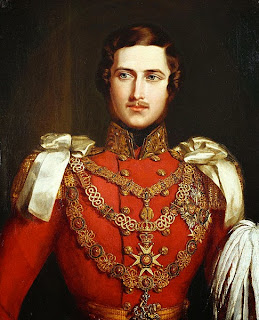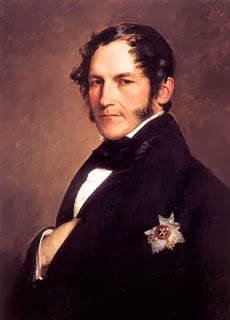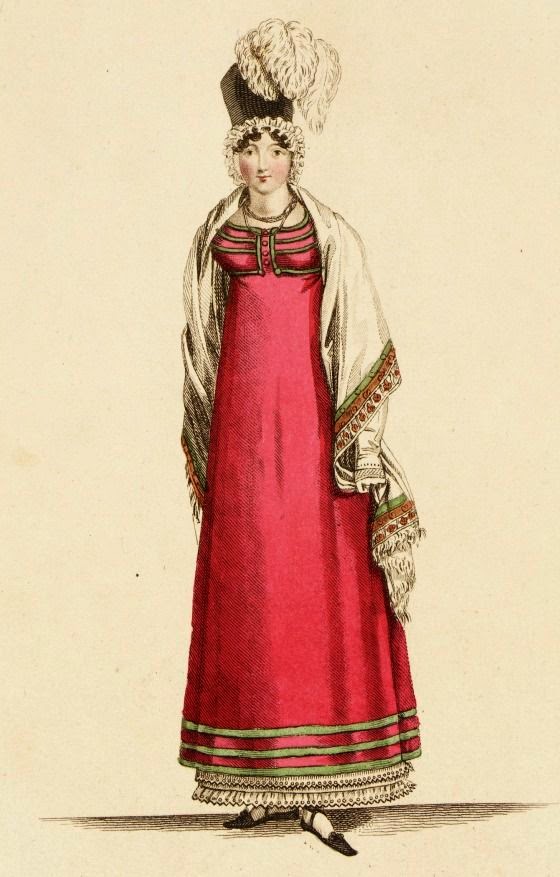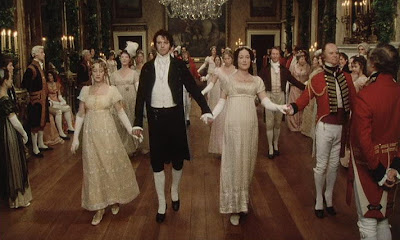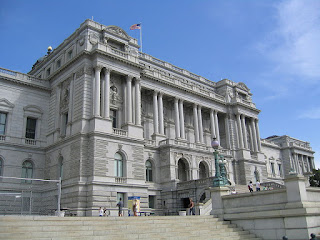Victoria here sharing a few of my fashion plates from magazines of 1815. At one time, I owned most of the 1815 and 1816 La Belle Assemblee volumes and plates, now residing in the Chawton House Library. I have kept digital and printed copies for my own use, but they will reach a better audience there. I still have a few from Ackermann’s, so herewith :
What you’d be Wearing 200 years ago!
La Belle Assemblée, February, 1815
From the magazine: “Parisian Costume: A short round dress of the finest light ruby Merino cloth, trimmed with narrow blue velvet, is worn over a cambric petticoat, no part of which is seen by the double flounce of the finest Valenciennes edging with which it is ornamented at the bottom. We refer our readers to the Print for the form of this dress. An elegant little cap of black velvet is put on over one of white lace, the lace border is disposed round the face in a very novel and becoming style. The hair is little seen on the forehead, and not at all on the neck, otherwise the fullness of lace would look much better; the cap is ornamented with a beautiful plume of white ostrich feathers, put on so as to fall over in front. White silk scarf with a border of intermingled blue and ruby. Black kid slippers, tied round the ancle (sic.) with a narrow black ribband; and white kid gloves.
We have selected this dress because it is at present in the highest estimation amongst the Parisian elegantes; it is certainly original, and the materials are elegant, the scarf, in particular, is superb; its tout ensemble is truly French, and the admirers of Parisian fashions will, we think, agree with us, as to its being one of the most striking lately introduced in that tasteful metropolis. The dinner dress was invented by Mrs. Bell, Inventress of the Ladies Chapeau Bras and the Circassian Corsets, and of whom only it can be had, at her Magazin des Modes, No. 26, Charlotte-street, Bedford-square; of who also May be had the Parisian Costume as above described.

Ackermann’s, March 1815
This looks like just the ensemble for the chilly winds of March. But that hat would need a strong set of pins to keep it on her head.
Description from the magazine: “Walking Dress: Pelisse of short walking length, made of evening-primrose coloured velvet, ornamented down the front with satin trimming, round capes, trimmed to correspond, full lace ruff. A French bonnet, composed of white velvet and satin in reversed plaitings, trimmed round the edge with a quilting of lace, full plume of ostrich feathers in the front. Half-boots of tan-coloured kid. Gloves, Limerick or York tan.”
Ackermann’s, April 1815
I love the parrot or budgie on her hand.
“Morning Dress: A loose robe of fine cambric or worked jaconot muslin, over a petticoat of the same, flounced with French trimming; long, full sleeve, confined at the wrist with treble drawings, and ornamented with corresponding trimming. The robe or neglige of demi-length, is confined at the top by a narrow collar or gathered into a Vandyke ruff, and is worn with coloured silk handkerchief, tied carelessly round the neck, and is fastened down the front with bows and tassels. A mob cap, composed of net and Brussels lace, decorated with a cluster of flowers, and bows of satin ribbon. Hair curled in the neck. Slippers or sandals of pale tan-coloured kid. Gloves en suite.”
La Belle Assemblée, May, 1815
Originally published March, 2015
Angouleme Walking Dress
Angouleme is an area of southwestern France. In 1799, the Duke of Angouleme married Marie Thérèse 1778-1851), eldest child of King Louis XVI of France and Queen Marie Antoinette. The Duke was the son of the eventual French King Charles X, who abdicated in 1830. As the niece of Louis XVIII. the Duchess was part of his entourage when he became King in 1814, and she accompanied him when he fled at Napoleon’s return to Paris. Since I cannot locate the magazine’s description of this plate, alas, I assume the ensemble is named for the Duchess in some regard.
La Belle Assemblée July 1815
Waterloo Walking Dress: After the Battle, the publishers of this maga
zine must have raced to find a suitable dress to commemorate the battle, something in the colors of mourning for the dead, yet expressive of the victorious celebration throughout the nation. Do you think they succeeded?
From the magazine: “Waterloo Walking Dress
This very beautiful dress, which answers the double purpose of walking or dinner dress, is composed of clear muslin and is made in a most original and tasteful style: the petticoat, as our readers will perceive by the Print, is ornamented in an elegant and appropriate manner with a tasteful black trimming. The body and sleeves, composed of an intermixture of black satin and clear muslin, are exquisitely fancied; they are made in a style of novelty, elegance, and simplicity which we never recollect being equalled in the mourning costume. The Waterloo dress, when worn for dinner parties, has no shirt, but some ladies shade the neck a little by a narrow frill of white crape round the bosom. In the walking costume it is worn with a shirt invented for the occasion, and trimmed in a very novel and appropriate style. Of the hat worn with this dress we can only observe that it is the most elegant and striking headdress ever invented for mourning; it is an intermixture of white satin and black crape, most tastefully ornamented with either black or white feathers. Black or white kid sandals and white kid gloves finish the dress, the effect of which altogether is much more elegant than our fair readers can conceive either from the Print or from our description. The above dress was invented by Mrs. Bell, Inventress of the Ladies Chapeau Bras and the Circassian Corset, and of whom only they can be had, at her Magazin des Modes, No. 26, Charlotte Street, Bedford-Square.”
La Belle Assemblée August 1815
The description below is particularly amusing, referring to ease of shedding the dress while in the bathing machine (see background drawing) ready to be ‘plunged.’
“Sea Side Bathing Dress: This very elegant dress is composed of the newly introduced Berlin silk. It is made in the form of a pelisse, and is so contrived that the stays, petticoat, and pelisse are all put on in a few moments. A flounce of green gauze, crape, or muslin, edged with an exceedingly pretty silk trimming, ornaments the dress; which, when on, is so finished and elegant that no one could suppose it was possible to adjust it in a few moments. A Leghorn hat ornamented with a plume of straw colour feathers, and green plaid leather boots, finish this dress, which we look upon as a chef d’oeuvre in its way, since, independent of the advantage which it is to a lady to be able to dress and undress so quickly, the most fastidious belle must confess that nothing can possibly be more becoming than this Sea Side Bathing Dress. The Wellington corset, with which it is worn, is admirably adapted to display in the most easy and graceful manner the natural proportions of the shape; and the tout ensemble of this elegant and useful habit is simple, tasteful and in the highest degree appropriate.”
Ackermann’s, September 1815
“Dinner Dress: A white satin slip worn under a dress made in primrose-coloured French gauze, terminating at the feet with a full flounce of blond lace, headed with a double border of the same, gathered in full, and confined with folds of satin, corresponding colours to the dress; handkerchief -front trimmed with white satin, and a falling collar of blond lace; long sleeve of white satin, the fulness upon the shoulder confined under an epaulet of the French gauze tried with white satin; the sleeve drawn alternately across the arm with the evening primrose coloured satin ribbon. Long white sash of white satin, tied in front. The ends of the hind hair brought forward, to fall in ringlets over the temple, confined with a plain white satin ribbon, and ornamented with a tiara of pearl. Necklace to correspond. Gloves, French kid. Slippers, white satin.”
Want more of 1815? We’d love to have you join us on Number One London’s
1815: London to Waterloo Tour, when we’ll be exploring this exciting year in-depth. Full details on our website, at the link above.
